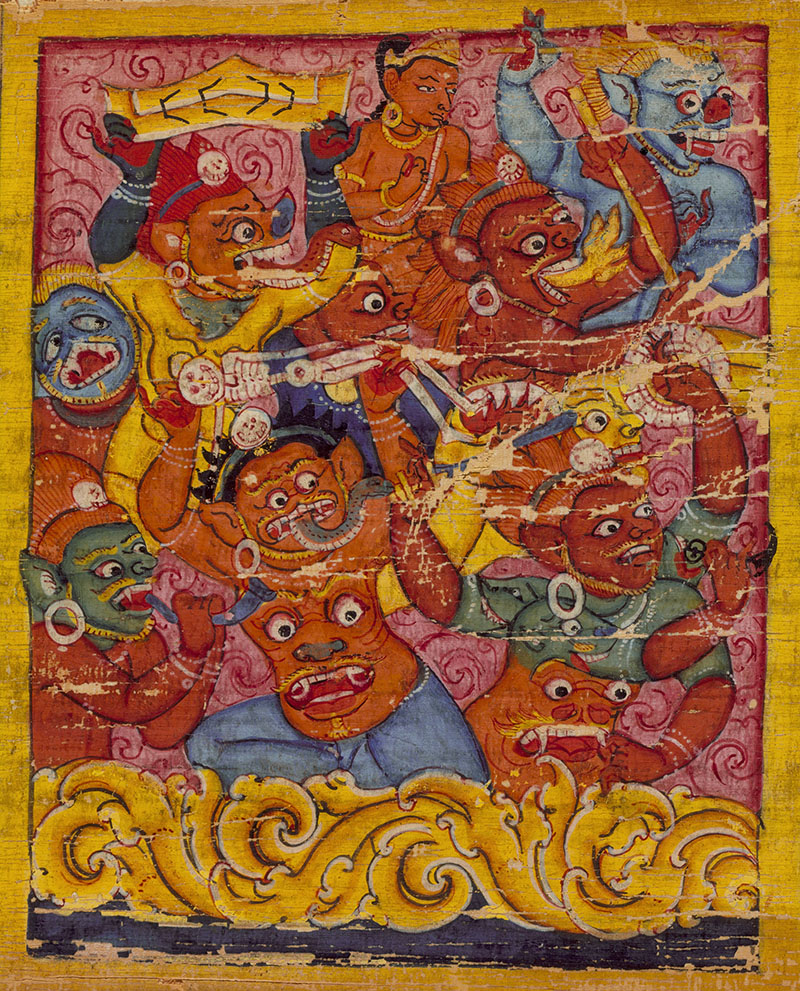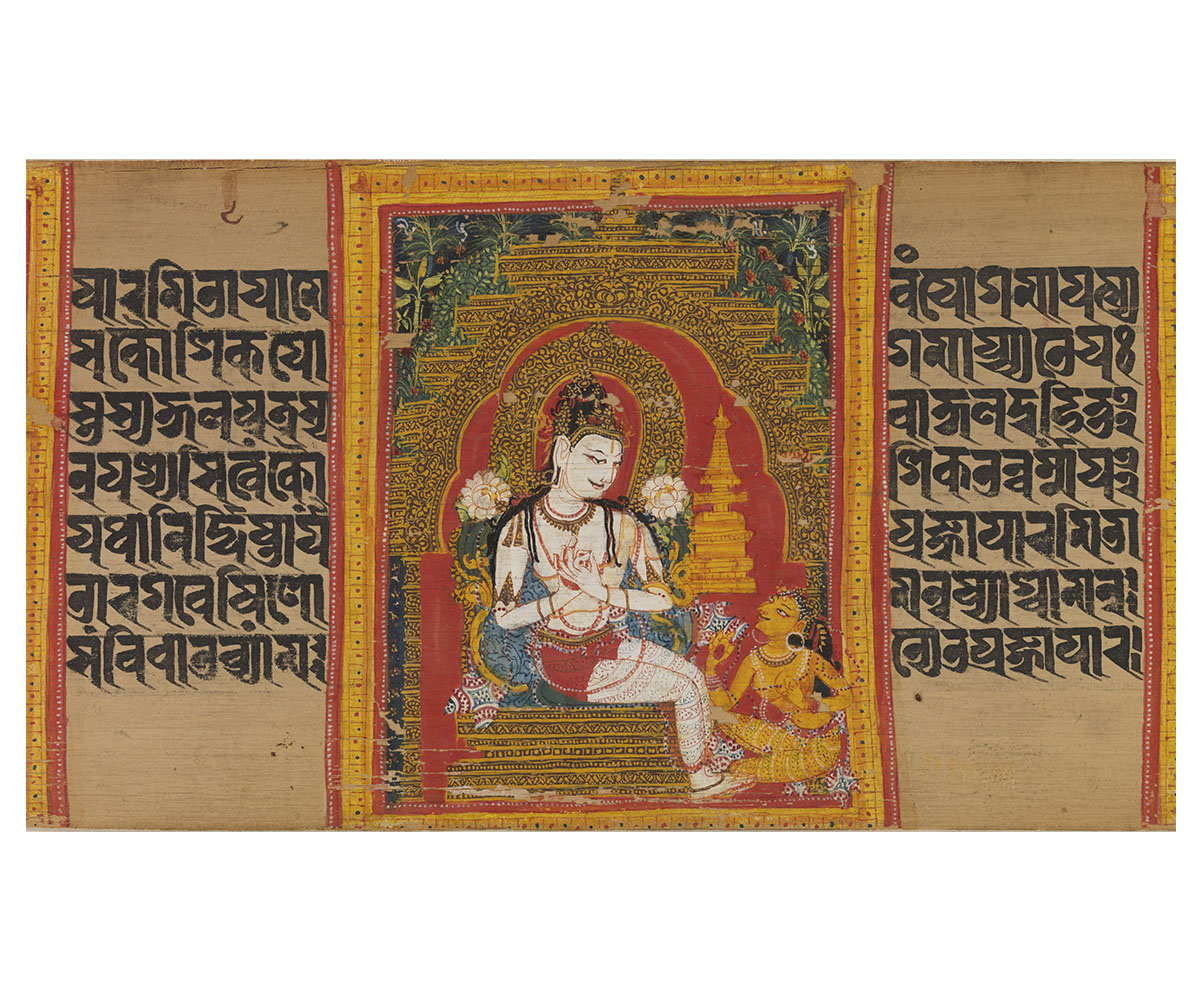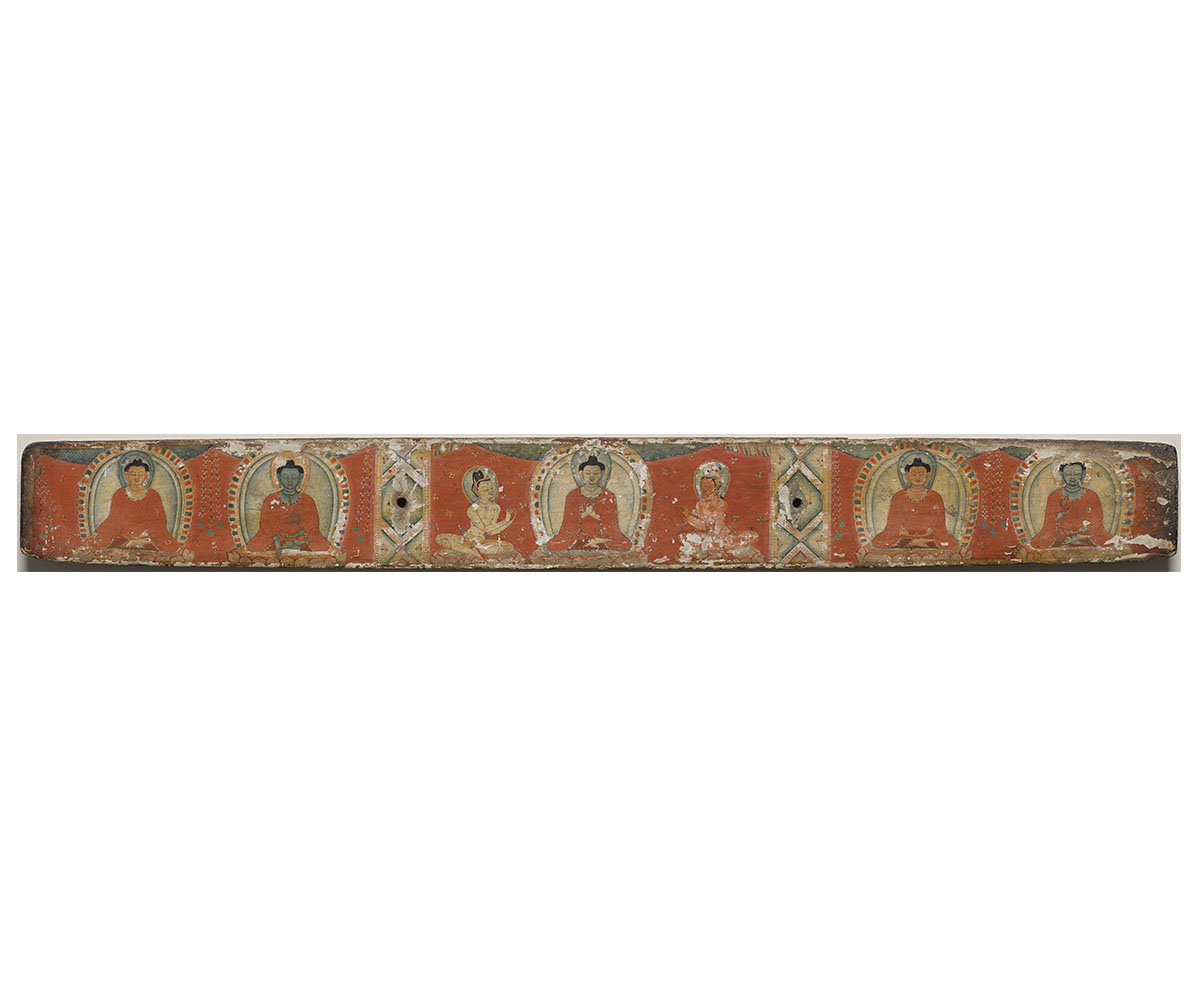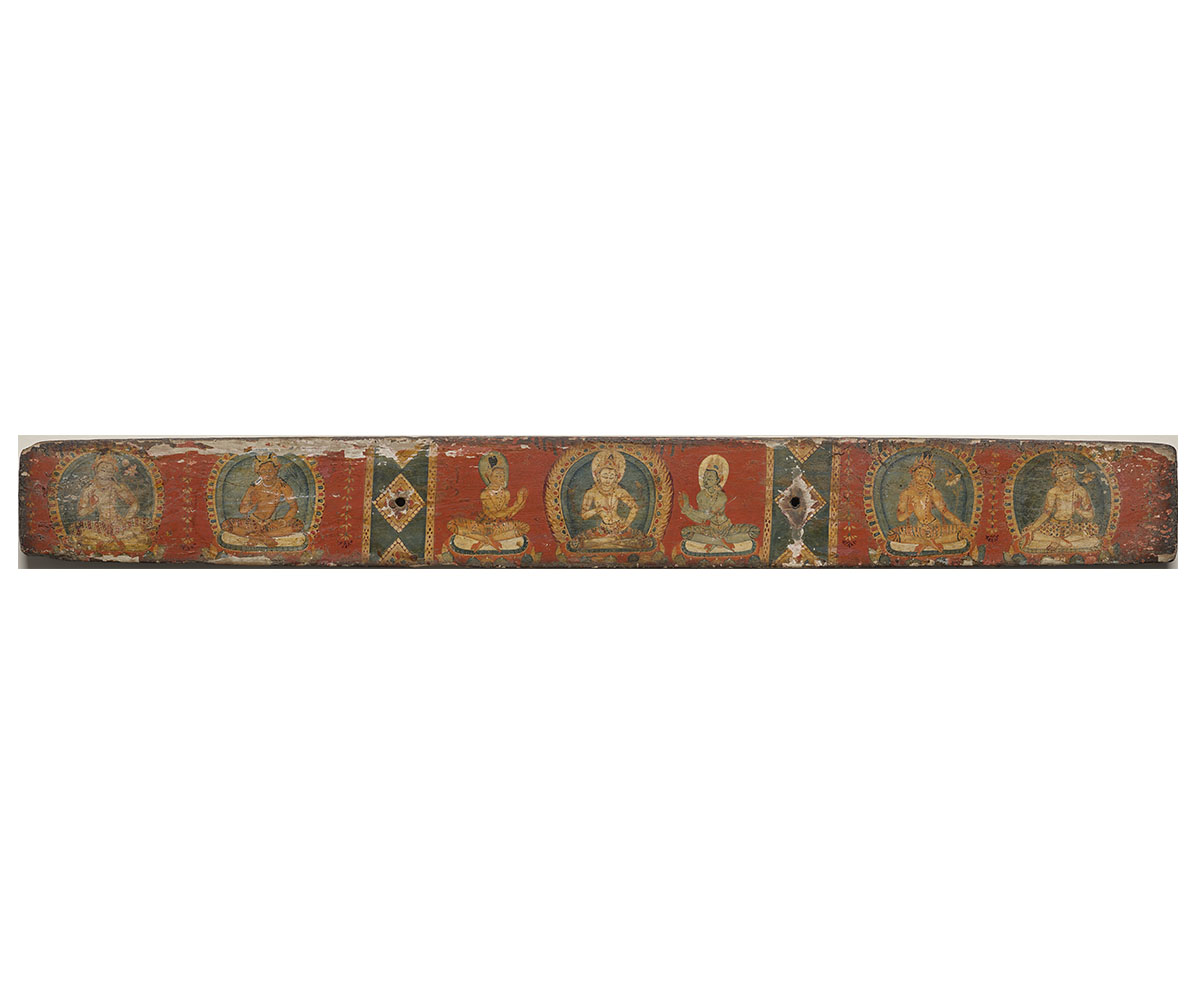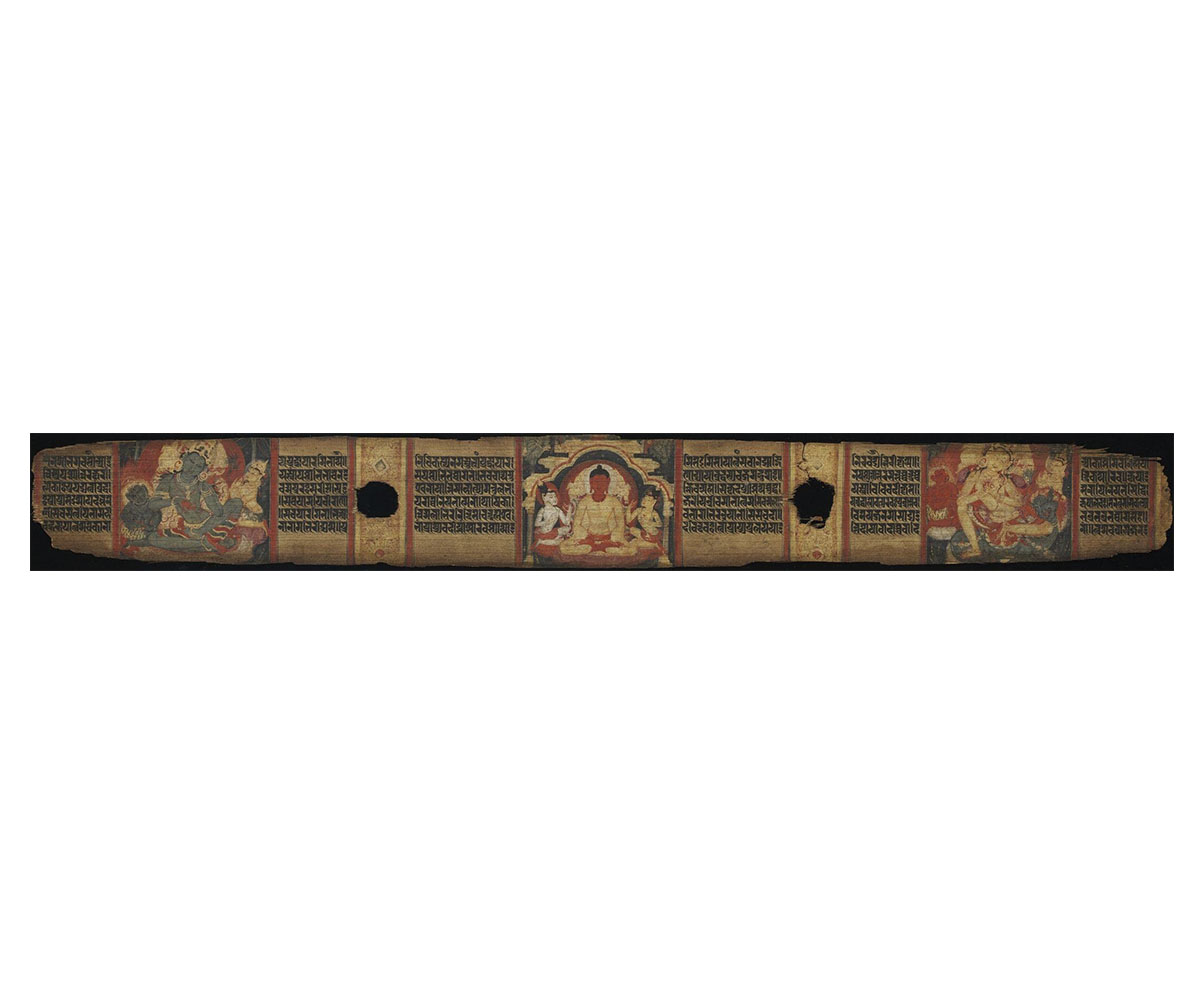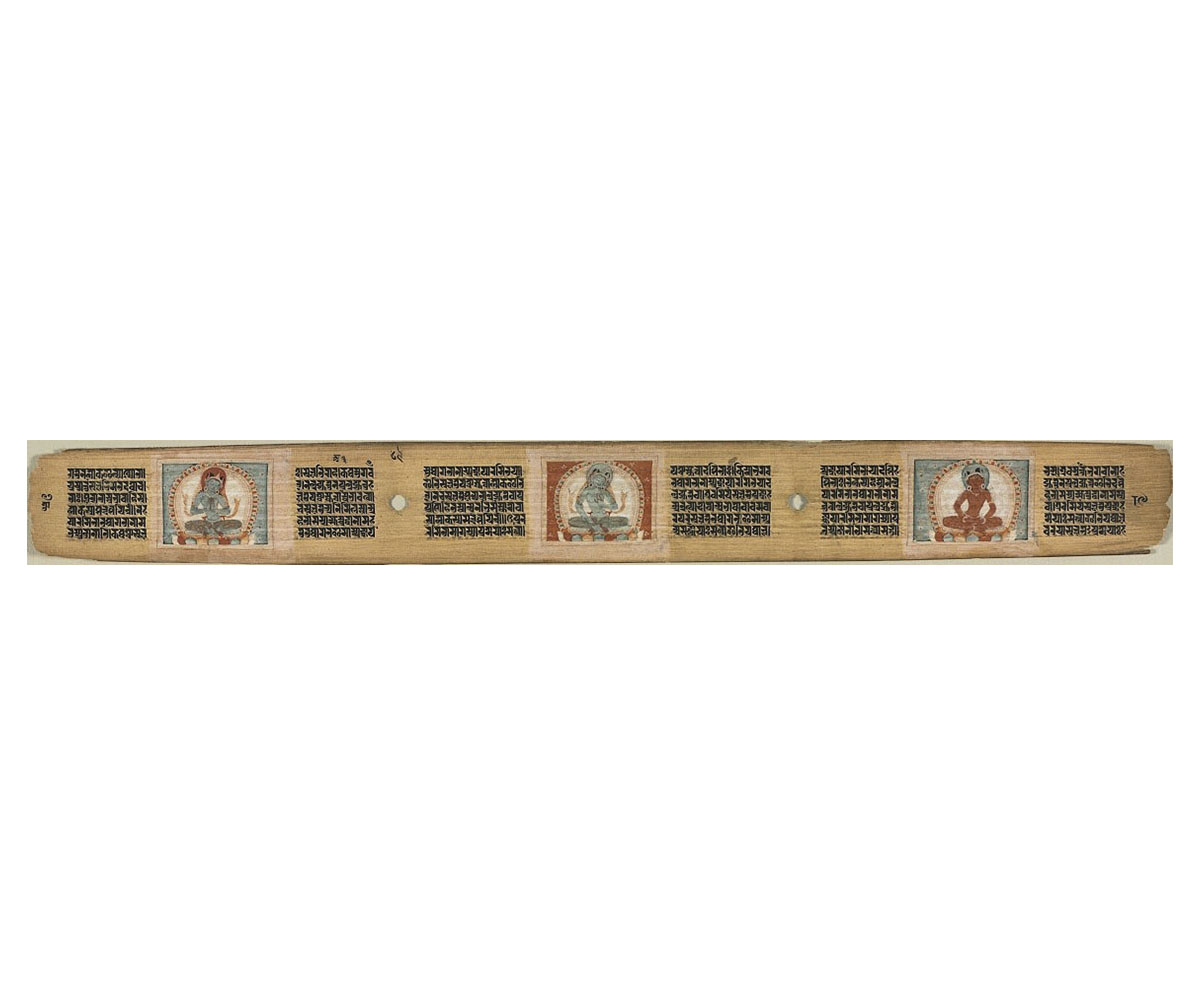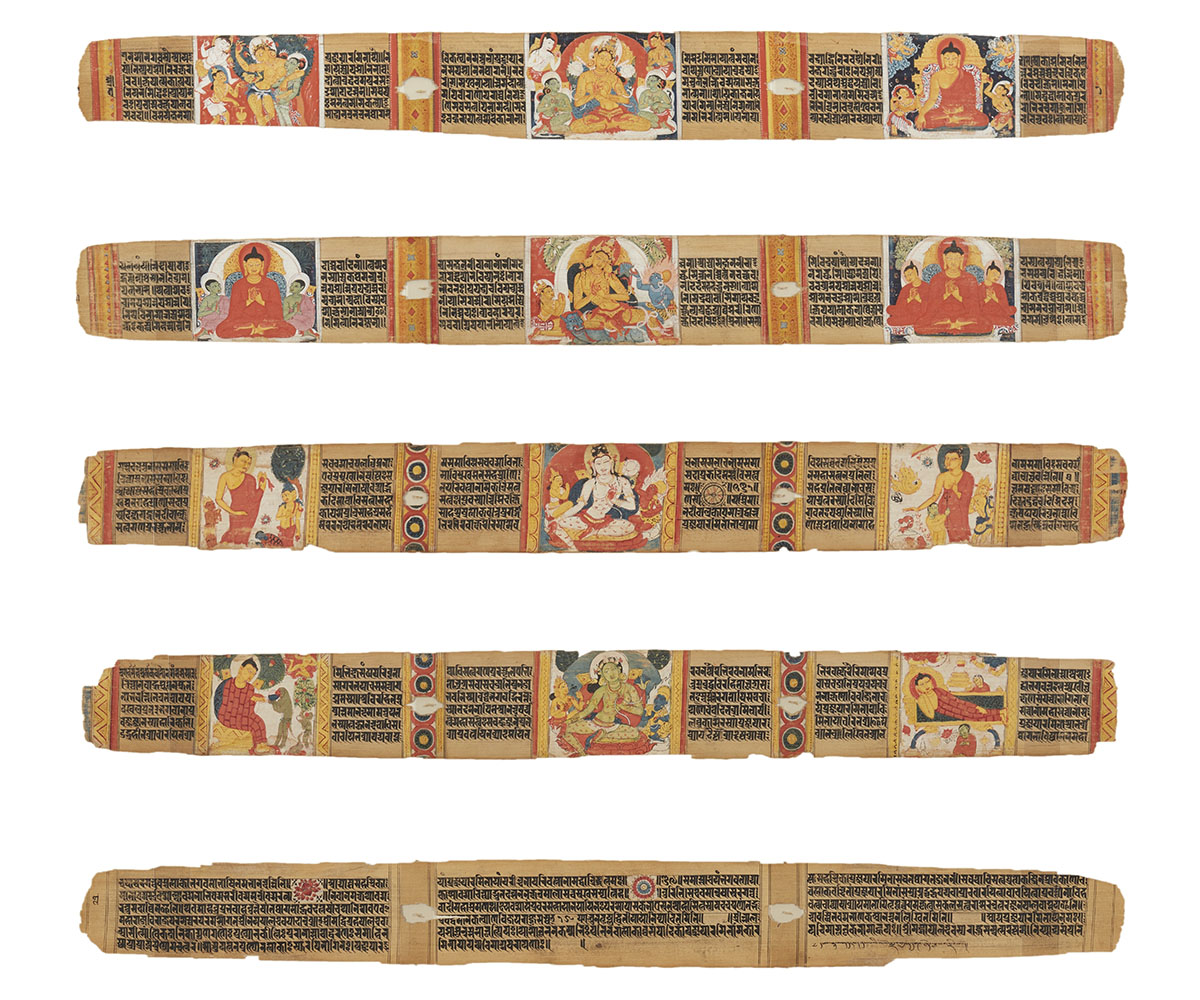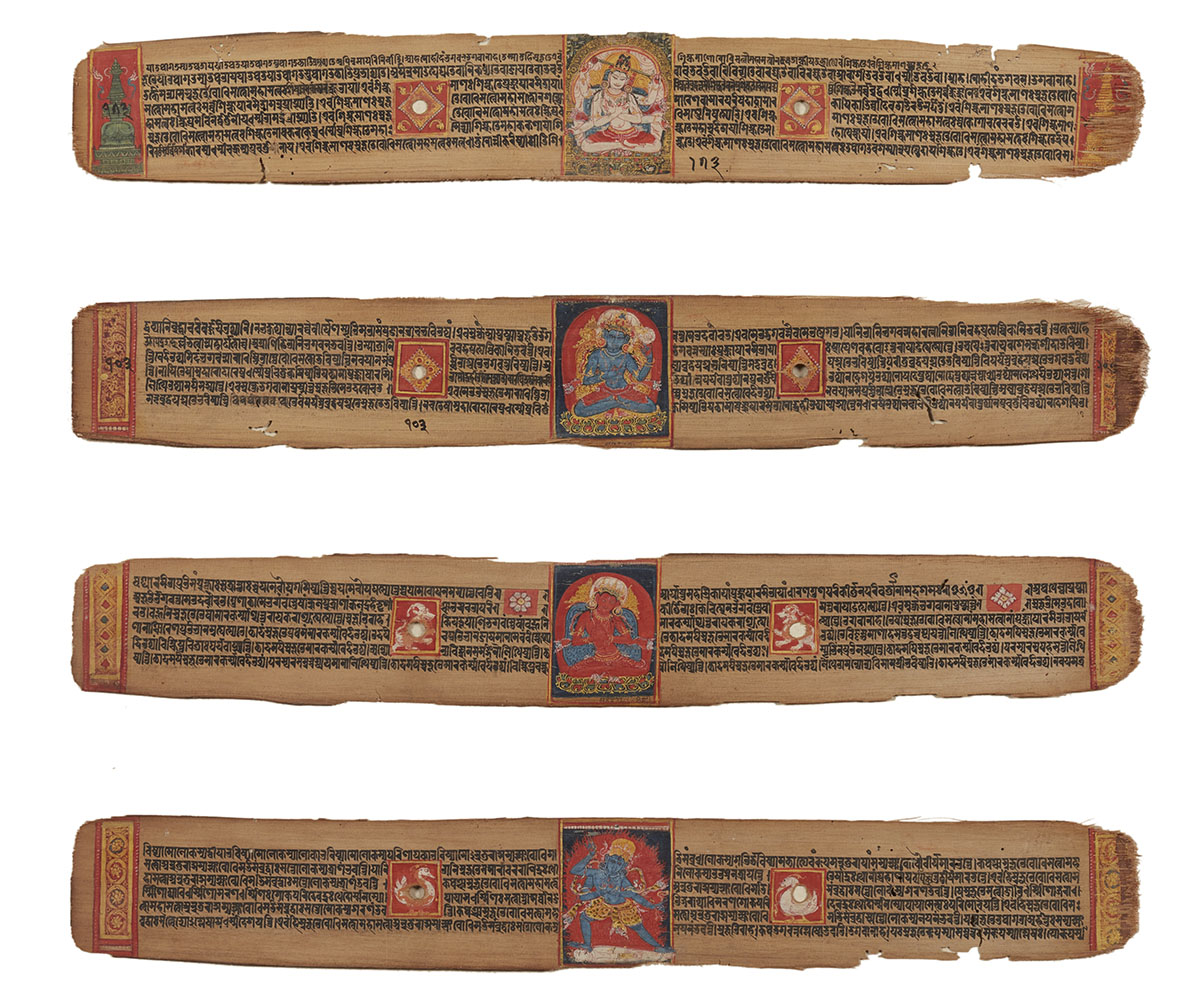Dated to the first century CE, Ashtasahasrika Prajnaparamita is is an influential doctrinal text in the context of Mahayana and Vajrayana Buddhism and the oldest text in a body of doctrinal texts collectively known as Prajnaparamita. The surviving Ashtasahasrika Prajnaparamita illustrated manuscripts provide insight into the artistic styles in the eastern and northern Indian subcontinent as well as changes in Buddhist thought and practice, particularly between the eleventh and twelfth centuries,, including the popular diffusion of Vajrayana Buddhism in this period, which was founded on the doctrines of Mahayana Buddhism. The earliest surviving illustrated Ashtasahasrika Prajnaparamita manuscript of South Asia dates to c. 983.
It was the most widely illustrated Buddhist manuscript between the eleventh and thirteenth centuries in South Asia and was also translated several times between the first and tenth centuries, undergoing textual evolutions that reflected the changing practices of Buddhism in the region. A majority of the surviving illustrated Ashtasahasrika Prajnaparamita manuscripts were made in Bihar and Bengal in present-day India, during the Pala period as well as in the region corresponding to present-day Nepal. These manuscripts were copied and illustrated by scribes and artists, including monks working in the scriptoria of the major Buddhist monastic institutions of Nalanda and Uddandapura, also known as Odantapuri, present-day Bihar, India and Vikramashila in present-day Bangladesh.
There may have been several factors for the surge in Buddhist manuscript illustration, including that of Ashtasahasrika Prajnaparamita, in the medieval period. In the Pala period, particularly during the reign of Dharmapala (c. 775–c. 812), the Prajnaparamita texts were promoted as important doctrines. The movement of pilgrims and monks from eastern and central Asia — where manuscript illustration was already being practised — to the Indian subcontinent may have introduced ideas concerning book production. The revival of Buddhism in the central and western Himalayas, corresponding to present-day Tibet and Ladakh, in the tenth and eleventh centuries resulted in further movement of scholars and translated Buddhist texts in the region. Finally, Vajrayana Buddhism became increasingly popular in the eastern part of the subcontinent and in the Himalayan region, which had an impact on the iconographic structure of the Ashtasahasrika Prajnaparamita.
The Ashtasahasrika Prajnaparamita manuscripts were of the palm-leaf type. The folios were made of palm leaves, and were enclosed in wooden or ivory covers and held together by string, which were passed through holes in the folios. The folios had one or multiple square or rectangluar panels for illustration. The holes for the strings, and the edges were adorned with decorative bands, which included motifs such as stupas and floral designs, or images of yogis or divinities. The inner faces of the covers were also elaborately illustrated. Artists were not mentioned in the manuscripts, but the names of scribes were sometimes mentioned on the colophon. These manuscripts were commissioned by lay donors and monks, and the copying, illustration and honouring of the manuscript as an act of religious merit was recommended in the text.
Due to the philosophical nature of the text, the iconographic programme of the Ashtasahasrika Prajnaparamita had little relation to the contents of the manuscript. The illustrations depicted the eight great miracles of the life of Buddha and the bodhisattvas and later, Vajrayana deities. There were further types within this framework. In some manuscripts, the depiction of the miracles — Buddha’s birth at Lumbini, his enlightenment at Bodhgaya, his first sermon at Sarnath, his mahaparinirvana at Kushinagara, the descent at Sankisya after preaching to his mother in heaven, the monkey’s offering of honey to the Buddha at Vaishali, the miracle of Shravasti and the taming of the elephant Nalagiri — flanked the depiction of deities such as Prajnaparamita, Manjushri, Avalokiteshvara and Tara; in later texts, wrathful forms of deities, such as Yamantaka, also began to be included. According to scholars, this format echoes the physical structure of the stupa, where scenes from the Buddha’s life decorated the external surfaces of the relic structure. This iconographic programme may have been formulated at Nalanda.
In another format, developed in Nepal, the illustrations depicted sacred Buddhist sites in Asia, including South Asia, Java, Sumatra and China, alongside scenes of the great miracles. conventional themes. A third type of programme used illustrations of divinities as indexical signs, which served to demarcate chapters or the beginning and end of the manuscript or served as symbols related to the text. In the fourth type, seen from the late eleventh century onwards, the book became a textual mandala or sacred space, through the arrangement of illustrations of Vajrayana Buddhist deities throughout the manuscript. For instance, in a manuscript of the fourth type, images of Vajrayana deities and their consorts were made on facing pages and the turning of a page was seen as symbolising their union.
Visually, the illustrations in Buddhist manuscripts, including the Ashtasahasrika Prajnaparamita, commonly used red as a background colour. They also used architectural elements as a backdrop to the figures to suggest depth. There are marked differences in the visual styles of manuscripts in Bihar and Bengal, and between eastern India and Nepal. In the Bihar style, deities were mostly pacific and shown in languid postures with large pillows or nimbuses. Only seated Buddhas are shown within pyramidal-roofed buildings. In Bengal, esoteric deities in peaceful and wrathful forms figured prominently and were depicted in shrines with three or five-lobed arches. Of the monastic centres, the Nalanda mahavihara was known for its high quality of manuscript illustration, with vivid depictions in primary colours and the use of white pigment for halos and mandorlas.
The primary difference between the manuscripts of Nepal and eastern India was seen in the tonality of pigments. For instance, brighter reds and yellows were used in eastern Indian manuscripts, whereas Nepal paintings used mauves, purples and pinks frequently. The figures in eastern Indian manuscripts were depicted in a bolder fashion, with features influenced by Pala sculptures, such as sharp chins as well as and sharp edges of limb joints, which appeared to jut out, while the figurative forms of Nepal painting were softer, featuring rounder faces and comparatively delicate features.




